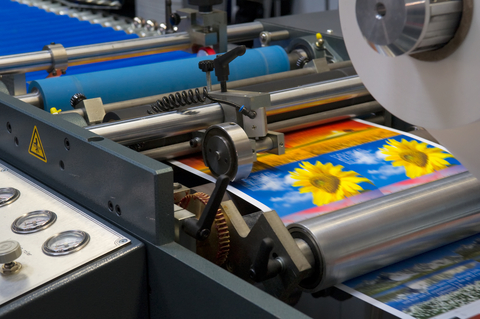Blog

The Real Use of Commercial Printers within Big Businesses
At a time when the demand for short run printing continues to dominate the world’s global printing landscape, companies that specialize in commercial printing are being forced to re-think their product portfolios.
Businesses want their commercial printers to deliver fewer overall pages, but with higher value per page. To meet this need, added functionality such as customized short-run printing, versioned collateral, web-to-print (W2P) automation, and photographic products have now been developed and introduced.
At the same time, commercial printing firms have also expanded their offering into data management as well as creative and design services for both online and offline use in order to serve their clients more effectively.
The Current State of Play for Commercial Printing
According to packaging and printing company, Smithers Pira, the global print industry generates a whopping $901 billion in annual revenue. However, thanks to strong growth in China, India, Mexico, Russia, and Brazil, analysts forecast the market to be worth $980 billion by 2018.
As for commercial printing, this accounts for 37% of total revenue, or $332 billion annually. This is in spite of challenges associated with electronic alternatives, which threaten to derail the power and potency of commercial printing.
Thankfully, the personalization and interactivity made possible from QR codes coupled with the fact that digital printing makes up 14.6% of print’s value means that this medium still remains an influential and relevant part of the marketing mix.
Also, commercial printing for items such as direct mail, advertising, and POP/POS is still a valuable and lucrative tool for big businesses wanting to increase exposure. However, often time the existing print technology doesn’t always manage to achieve these aspirations.
Managing and Meeting Commercial Printing Expectations
Current digital devices such as inkjet are often seen as the solution to quick-turn, short-run production, they rarely deliver in terms of time, quality, and cost. If a business wants to meet the rapidly changing needs of the customer, it must have commercial printers capable of print quality comparable to offset, while also being profitable for mainstream applications and quantities.
Introducing Nanography
Businesses are often searching for the solution that combines the largest benefits of digital and offset printing. As a result, big businesses can capitalize on commercial printers that deliver high quality printing at rapid speeds with short-run and variable flexibility.For example, Landa S10 Nanographic Printing Presses generate throughput up to 6,500 B1 sheets (41 in. / 1,050 mm) per hour.
Thanks to water-based colorants featuring efficient light-absorbing nanopigments, the end result is a wide colour gamut using CMYK, which also matches more than 75% of the Pantone colour chart.
Big business needing large scale printing may have found the solution they have been searching form; printing that promises to meet the demands of the modern, instant access, 24/7, flexible digital world.



Comments